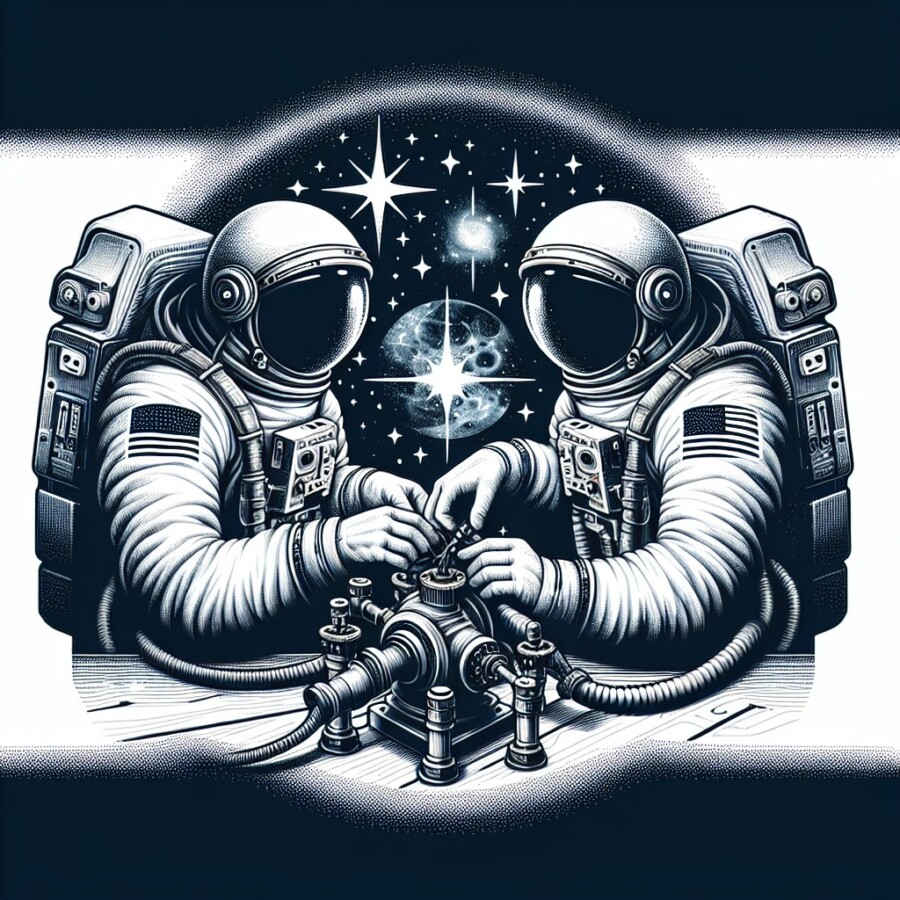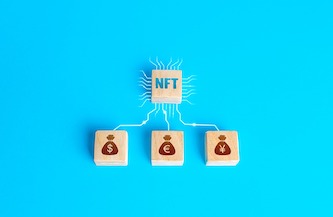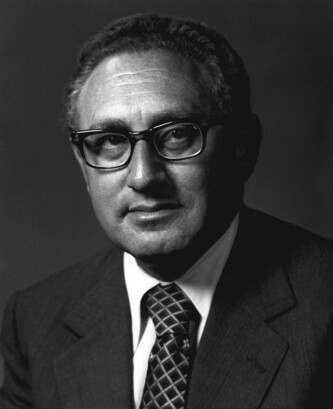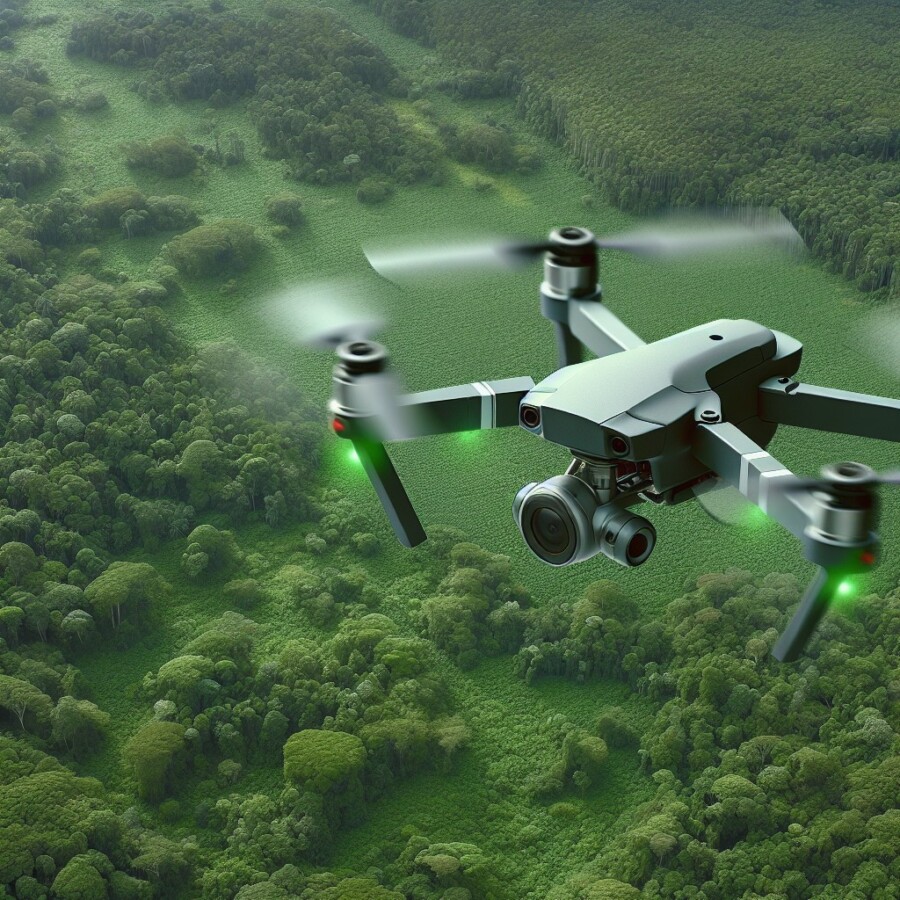The Apollo missions of the 1960s and 1970s were a significant milestone in space exploration, with 24 NASA astronauts traveling to the Moon. However, as the race to return to the lunar surface heats up, it is important to acknowledge that the number of surviving Apollo astronauts is dwindling. Recently, Ken Mattingly and Frank Borman, both part of the Apollo program, passed away, leaving only eight individuals who have voyaged beyond Earth orbit.
One of the most well-known Apollo astronauts is Buzz Aldrin, who was the second person to step foot on the Moon during the Apollo 11 mission. Although he was proud of his achievement, Aldrin always felt a sense of resentment for not being the first. He remained an advocate for space exploration and even joined expeditions to the North and South Poles in his later years.
Bill Anders, a member of the Apollo 8 crew, was one of the first humans to orbit the Moon. The iconic “Earthrise” image captured by Anders during the mission played a significant role in inspiring the global environmental movement. After retiring from the space program, Anders worked in the aerospace industry and served as the US Ambassador to Norway.
Charlie Duke, one of the four remaining astronauts who have walked on the Moon, had the honor of being the Capsule Communicator during the Apollo 11 mission. He was the one who received Neil Armstrong’s famous words, “The Eagle has landed.” Duke now lives in Texas with his wife, Dorothy, and remains excited about NASA’s future missions.
Fred Haise, a member of the ill-fated Apollo 13 mission, narrowly avoided disaster when an onboard explosion forced the mission to be aborted. After leaving NASA, Haise continued to work in the aerospace industry and became a test pilot on the prototype space shuttle.
Jim Lovell, who was part of the Apollo 8 and Apollo 13 missions, made history as one of the first humans to orbit the Moon. Although he never walked on the lunar surface, Lovell’s brush with death during the Apollo 13 mission was immortalized in the film of the same name. Lovell is now the oldest living astronaut.
Harrison Schmitt, a geologist and academic, was part of the last crewed mission to the Moon, Apollo 17. After leaving NASA, Schmitt served as a US Senator and has been known for his skepticism towards the scientific consensus on climate change.
David Scott, the commander of Apollo 15, was one of the first astronauts to drive on the Moon using the Lunar Roving Vehicle. After retiring from NASA, Scott worked in various management roles and has been involved in film and television projects related to space exploration.
Tom Stafford, the commander of Apollo 10, led the final test mission before the historic Apollo 11 landing. He also played a significant role in the Apollo-Soyuz Test Project, the first joint space mission between the US and the Soviet Union. Stafford’s friendship with his
Original news source: The last of the Moon men: the stories of the surviving Apollo astronauts (BBC)
🎧 Listen:
Slow
Normal
Fast
📖 Vocabulary:
| 1 | milestone | A significant point in development or progress |
| 2 | dwindling | Decreasing in number or quantity |
| 3 | voyaged | Traveled, especially over a long distance |
| 4 | resentment | A feeling of displeasure or indignation at some act, remark, person, etc., regarded as causing injury or insult |
| 5 | advocate | A person who publicly supports or recommends a particular cause or policy |
| 6 | expeditions | Organized journeys or explorations for a particular purpose |
| 7 | iconic | Widely recognized and well-established as being significant or representative |
| 8 | aborted | Stopped or terminated before completion |
| 9 | prototype | An original model on which something is patterned or based |
| 10 | immortalized | Given a lasting fame to by or as if by recording in a medium that ensures preservation |
| 11 | skepticism | An attitude of doubt or disbelief, often questioning a generally accepted opinion |
| 12 | consensus | General agreement among a group of people |
| 13 | commander | A person in authority, especially over a body of troops or a military operation |
| 14 | skepticism | Doubt or disbelief, often questioning a generally accepted opinion |
| 15 | historic | Having great importance or significance in history |
Group or Classroom Activities
Warm-up Activities:
– News Summary
Instructions: Divide the class into small groups. Each group will read the article and then work together to write a concise summary of the main points. After a designated amount of time, each group will share their summary with the class.
– Opinion Poll
Instructions: Have the students form pairs. Assign each pair an Apollo astronaut mentioned in the article. Each student will take turns asking their partner questions about their assigned astronaut and recording their partner’s responses. Afterward, the pairs will share their findings with the class and discuss any differences in opinions.
– Vocabulary Pictionary
Instructions: Write a list of vocabulary words from the article on the board. Divide the class into two teams. One student from each team will come to the front of the class and choose a word from the list. They must then draw a picture to represent the word while their team tries to guess what it is. The team that guesses correctly earns a point. Continue until all the words have been drawn and guessed.
– Keyword Taboo
Instructions: Divide the class into small groups. Give each group a set of index cards with keywords from the article written on them. One student from each group will pick a card and try to describe the keyword to their group without using the word itself. The group must then guess the keyword. Continue until all the keywords have been guessed.
– Future Predictions
Instructions: Have the class form pairs. Each pair will discuss and make predictions about the future of space exploration, based on the information from the article. They should consider factors such as technological advancements, international cooperation, and potential challenges. Afterward, pairs can share their predictions with the class and engage in a class discussion about the future of space exploration.
🤔 Comprehension Questions:
1. How many surviving Apollo astronauts have voyaged beyond Earth orbit?
2. Who was the second person to step foot on the Moon during the Apollo 11 mission?
3. What role did Bill Anders play in inspiring the global environmental movement?
4. Who was the Capsule Communicator during the Apollo 11 mission?
5. What happened during the ill-fated Apollo 13 mission?
6. What role did Jim Lovell play in the Apollo missions?
7. What has Harrison Schmitt been known for after leaving NASA?
8. What significant role did Tom Stafford play in the Apollo missions and the Apollo-Soyuz Test Project?
Go to answers ⇩
🎧✍️ Listen and Fill in the Gaps:
The Apollo missions of the 1960s and 1970s were a significant milestone in space exploration, with 24 NASA astronauts (1)______ to the Moon. However, as the race to return to the lunar surface heats up, it is important to acknowledge that the (2)______ of surviving Apollo astronauts is dwindling. Recently, Ken Mattingly and Frank (3)______, both part of the Apollo program, passed away, (4)______ only eight individuals who have voyaged beyond Earth orbit.
One of the most well-known Apollo astronauts is Buzz Aldrin, who was the second person to step foot on the Moon during the Apollo 11 mission. Although he was proud of his achievement, Aldrin always felt a sense of resentment for not being the first. He remained an advocate for space exploration and even joined expeditions to the North and South Poles in his later years.
Bill Anders, a member of the Apollo 8 crew, was one of the first humans to orbit the Moon. The iconic “Earthrise” (5)______ captured by Anders during the mission played a significant role in inspiring the global environmental movement. After retiring from the space program, Anders worked in the aerospace industry and served as the US Ambassador to Norway.
Charlie Duke, one of the four remaining astronauts who have (6)______ on the Moon, had the honor of being the Capsule Communicator during the Apollo 11 mission. He was the one who received Neil Armstrong’s (7)______ words, “The Eagle has (8)______.” Duke now lives in Texas with his wife, Dorothy, and remains excited about NASA’s (9)______ (10)______s.
Fred Haise, a (11)______ of the ill-fated Apollo 13 mission, narrowly avoided disaster when an onboard explosion forced the mission to be aborted. After leaving NASA, Haise continued to work in the aero(12)______ industry and became a test pilot on the prototype space shuttle.
Jim Lovell, who was part of the Apollo 8 and Apollo 13 missions, made history as one of the first humans to orbit the Moon. Although he never walked on the lunar surface, Lovell’s brush with death during the Apollo 13 mission was immortalized in the film of the same name. Lovell is now the oldest living astronaut.
Harrison Schmitt, a geologist and academic, was part of the last crewed mission to the Moon, Apollo 17. After leaving NASA, Schmitt served as a US Senator and has been known for his skepticism towards the (13)______ consensus on climate (14)______.
David (15)______, the commander of Apollo 15, was one of the first astronauts to drive on the Moon using the Lunar Roving Vehicle. After retiring from NASA, Scott worked in various management roles and has been involved in film and television projects related to space exploration.
Tom Stafford, the commander of Apollo 10, led the final test mission before the historic Apollo 11 landing. He also played a significant role in the Apollo-Soyuz Test Project, the first joint space mission between the US and the (16)______ Union. Stafford’s friendship with his
Go to answers ⇩
💬 Discussion Questions:
Students can ask a partner these questions, or discuss them as a group.
1. What do you think is the significance of the Apollo missions in space exploration?
2. How do you feel about the fact that the number of surviving Apollo astronauts is decreasing?
3. Do you think being the second person to step foot on the Moon would still be a significant achievement? Why or why not?
4. How would you feel if you were an astronaut who never had the opportunity to walk on the lunar surface?
5. Do you think the iconic “Earthrise” image captured by Bill Anders had a significant impact on the global environmental movement? Why or why not?
6. What are your thoughts on astronauts like Buzz Aldrin and Bill Anders continuing to contribute to society after retiring from the space program?
7. How would you feel if you were the one who received Neil Armstrong’s famous words, “The Eagle has landed”?
8. Do you think the Apollo 13 mission and the film based on it have had a lasting impact on space exploration? Why or why not?
9. What are your thoughts on Harrison Schmitt’s skepticism towards the scientific consensus on climate change?
10. How do you think driving on the Moon using the Lunar Roving Vehicle would compare to driving on Earth?
11. Do you think the Apollo-Soyuz Test Project was a significant milestone in international cooperation in space exploration? Why or why not?
12. How do you think the friendship between Tom Stafford and his Soviet counterparts impacted the success of the Apollo-Soyuz Test Project?
13. What would you do if you had the opportunity to go on a space mission beyond Earth orbit?
14. How do you think the advancements in space exploration since the Apollo missions have impacted society?
15. Do you think it is important for future generations to learn about and appreciate the achievements of the Apollo astronauts? Why or why not?
Individual Activities
📖💭 Vocabulary Meanings:
Match each word to its meaning.
Words:
1. milestone
2. dwindling
3. voyaged
4. resentment
5. advocate
6. expeditions
7. iconic
8. aborted
9. prototype
10. immortalized
11. skepticism
12. consensus
13. commander
14. skepticism
15. historic
Meanings:
(A) Widely recognized and well-established as being significant or representative
(B) Given a lasting fame to by or as if by recording in a medium that ensures preservation
(C) Doubt or disbelief, often questioning a generally accepted opinion
(D) Having great importance or significance in history
(E) An original model on which something is patterned or based
(F) Traveled, especially over a long distance
(G) Stopped or terminated before completion
(H) General agreement among a group of people
(I) Decreasing in number or quantity
(J) A feeling of displeasure or indignation at some act, remark, person, etc., regarded as causing injury or insult
(K) A person in authority, especially over a body of troops or a military operation
(L) A person who publicly supports or recommends a particular cause or policy
(M) An attitude of doubt or disbelief, often questioning a generally accepted opinion
(N) A significant point in development or progress
(O) Organized journeys or explorations for a particular purpose
Go to answers ⇩
🔡 Multiple Choice Questions:
1. How many NASA astronauts traveled to the Moon during the Apollo missions?
(a) 10
(b) 5
(c) 24
(d) 50
2. Who was the second person to step foot on the Moon?
(a) Buzz Aldrin
(b) Neil Armstrong
(c) Frank Borman
(d) Ken Mattingly
3. Who captured the iconic “Earthrise” image during the Apollo 8 mission?
(a) Buzz Aldrin
(b) Charlie Duke
(c) Fred Haise
(d) Bill Anders
4. Who received Neil Armstrong’s famous words, “The Eagle has landed” during the Apollo 11 mission?
(a) Buzz Aldrin
(b) Jim Lovell
(c) Harrison Schmitt
(d) Charlie Duke
5. Which astronaut narrowly avoided disaster during the ill-fated Apollo 13 mission?
(a) Buzz Aldrin
(b) Tom Stafford
(c) Fred Haise
(d) David Scott
6. Who made history as one of the first humans to orbit the Moon?
(a) Harrison Schmitt
(b) Jim Lovell
(c) David Scott
(d) Tom Stafford
7. Who served as a US Senator after leaving NASA?
(a) Bill Anders
(b) Harrison Schmitt
(c) Fred Haise
(d) Tom Stafford
8. Who was the commander of Apollo 15 and drove on the Moon using the Lunar Roving Vehicle?
(a) David Scott
(b) Buzz Aldrin
(c) Charlie Duke
(d) Jim Lovell
Go to answers ⇩
🕵️ True or False Questions:
1. Aldrin did not feel a sense of resentment for not being the first person on the Moon.
2. There are currently more than eight surviving Apollo astronauts who have voyaged beyond Earth orbit.
3. Charlie Duke, one of the four remaining astronauts who have walked on the Moon, was the Capsule Communicator during the Apollo 11 mission.
4. Bill Anders, a member of the Apollo 8 crew, was one of the first humans to orbit the Moon.
5. Buzz Aldrin was not the second person to step foot on the Moon during the Apollo 11 mission.
6. Jim Lovell, part of the Apollo 8 and Apollo 13 missions, is now the oldest living astronaut.
7. Ken Mattingly and Frank Borman, neither part of the Apollo program, recently passed away.
8. Anders’ “Earthrise” image played a significant role in inspiring the global environmental movement.
Go to answers ⇩
📝 Write a Summary:
Write a summary of this news article in two sentences.
Check your writing now with the best free AI for English writing!
Writing Questions:
Answer the following questions. Write as much as you can for each answer.
Check your answers with our free English writing assistant!
1. How many surviving Apollo astronauts are there currently?
2. Who was the second person to step foot on the Moon during the Apollo 11 mission?
3. What role did Bill Anders play in inspiring the global environmental movement?
4. What famous words did Charlie Duke receive during the Apollo 11 mission?
5. Who narrowly avoided disaster during the ill-fated Apollo 13 mission?
✅ Answers
🤔✅ Comprehension Question Answers:
1. How many surviving Apollo astronauts have voyaged beyond Earth orbit?
– There are currently eight surviving Apollo astronauts who have voyaged beyond Earth orbit.
2. Who was the second person to step foot on the Moon during the Apollo 11 mission?
– Buzz Aldrin was the second person to step foot on the Moon during the Apollo 11 mission.
3. What role did Bill Anders play in inspiring the global environmental movement?
– Bill Anders captured the iconic “Earthrise” image during the Apollo 8 mission, which played a significant role in inspiring the global environmental movement.
4. Who was the Capsule Communicator during the Apollo 11 mission?
– Charlie Duke was the Capsule Communicator during the Apollo 11 mission.
5. What happened during the ill-fated Apollo 13 mission?
– The Apollo 13 mission experienced an onboard explosion, which forced the mission to be aborted and became a life-threatening situation for the astronauts. They managed to return safely to Earth with the help of NASA’s ground control.
6. What role did Jim Lovell play in the Apollo missions?
– Jim Lovell was part of the Apollo 8 and Apollo 13 missions, making history as one of the first humans to orbit the Moon. He also played a significant role in the Apollo 13 mission, where he and his crew faced a life-threatening situation.
7. What has Harrison Schmitt been known for after leaving NASA?
– After leaving NASA, Harrison Schmitt served as a US Senator and has been known for his skepticism towards the scientific consensus on climate change.
8. What significant role did Tom Stafford play in the Apollo missions and the Apollo-Soyuz Test Project?
– Tom Stafford was the commander of Apollo 10, leading the final test mission before the historic Apollo 11 landing. He also played a significant role in the Apollo-Soyuz Test Project, which was the first joint space mission between the US and the Soviet Union.
Go back to questions ⇧
🎧✍️✅ Listen and Fill in the Gaps Answers:
(1) traveling
(2) number
(3) Borman
(4) leaving
(5) image
(6) walked
(7) famous
(8) landed
(9) future
(10) mission
(11) member
(12) space
(13) scientific
(14) change
(15) Scott
(16) Soviet
Go back to questions ⇧
📖💭✅ Vocabulary Meanings Answers:
1. milestone
Answer: (N) A significant point in development or progress
2. dwindling
Answer: (I) Decreasing in number or quantity
3. voyaged
Answer: (F) Traveled, especially over a long distance
4. resentment
Answer: (J) A feeling of displeasure or indignation at some act, remark, person, etc., regarded as causing injury or insult
5. advocate
Answer: (L) A person who publicly supports or recommends a particular cause or policy
6. expeditions
Answer: (O) Organized journeys or explorations for a particular purpose
7. iconic
Answer: (A) Widely recognized and well-established as being significant or representative
8. aborted
Answer: (G) Stopped or terminated before completion
9. prototype
Answer: (E) An original model on which something is patterned or based
10. immortalized
Answer: (B) Given a lasting fame to by or as if by recording in a medium that ensures preservation
11. skepticism
Answer: (M) An attitude of doubt or disbelief, often questioning a generally accepted opinion
12. consensus
Answer: (H) General agreement among a group of people
13. commander
Answer: (K) A person in authority, especially over a body of troops or a military operation
14. skepticism
Answer: (C) Doubt or disbelief, often questioning a generally accepted opinion
15. historic
Answer: (D) Having great importance or significance in history
Go back to questions ⇧
🔡✅ Multiple Choice Answers:
1. How many NASA astronauts traveled to the Moon during the Apollo missions?
Answer: (c) 24
2. Who was the second person to step foot on the Moon?
Answer: (a) Buzz Aldrin
3. Who captured the iconic “Earthrise” image during the Apollo 8 mission?
Answer: (d) Bill Anders
4. Who received Neil Armstrong’s famous words, “The Eagle has landed” during the Apollo 11 mission?
Answer: (d) Charlie Duke
5. Which astronaut narrowly avoided disaster during the ill-fated Apollo 13 mission?
Answer: (c) Fred Haise
6. Who made history as one of the first humans to orbit the Moon?
Answer: (b) Jim Lovell
7. Who served as a US Senator after leaving NASA?
Answer: (b) Harrison Schmitt
8. Who was the commander of Apollo 15 and drove on the Moon using the Lunar Roving Vehicle?
Answer: (a) David Scott
Go back to questions ⇧
🕵️✅ True or False Answers:
1. Aldrin did not feel a sense of resentment for not being the first person on the Moon. (Answer: False)
2. There are currently more than eight surviving Apollo astronauts who have voyaged beyond Earth orbit. (Answer: False)
3. Charlie Duke, one of the four remaining astronauts who have walked on the Moon, was the Capsule Communicator during the Apollo 11 mission. (Answer: True)
4. Bill Anders, a member of the Apollo 8 crew, was one of the first humans to orbit the Moon. (Answer: True)
5. Buzz Aldrin was not the second person to step foot on the Moon during the Apollo 11 mission. (Answer: False)
6. Jim Lovell, part of the Apollo 8 and Apollo 13 missions, is now the oldest living astronaut. (Answer: True)
7. Ken Mattingly and Frank Borman, neither part of the Apollo program, recently passed away. (Answer: False)
8. Anders’ “Earthrise” image played a significant role in inspiring the global environmental movement. (Answer: True)
Go back to questions ⇧













